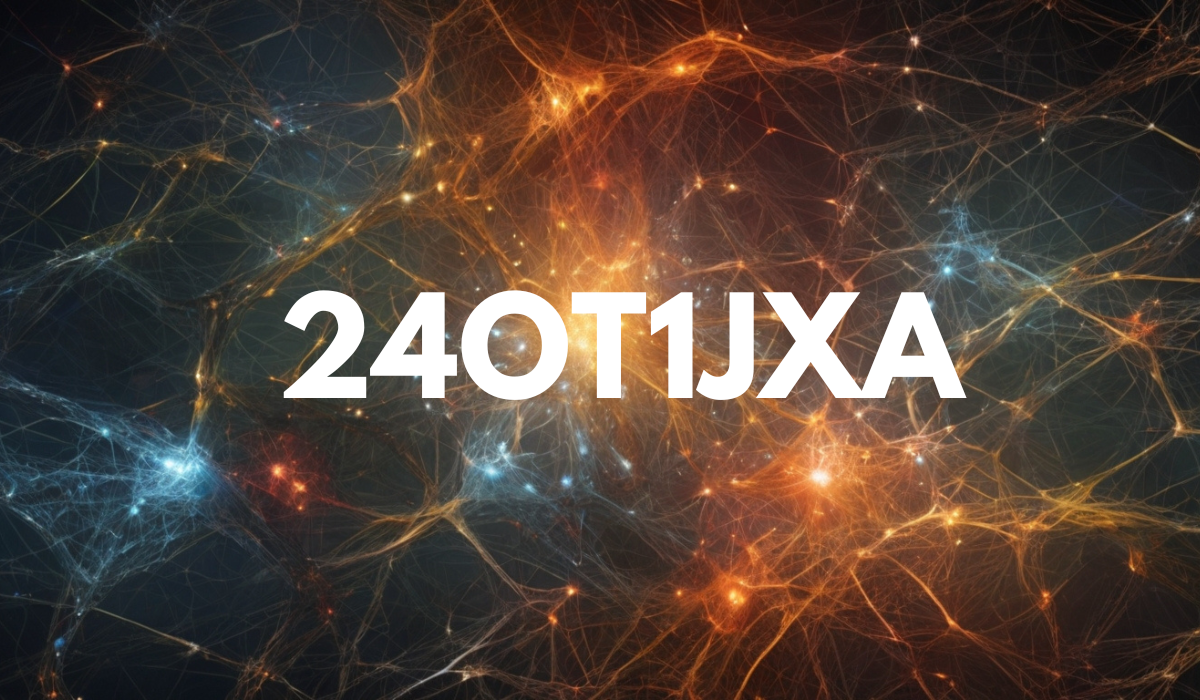Why 24OT1JXA Harmful and Must Be Addressed
Introduction
Specific codes or identifiers often emerge in our digital and industrial ecosystems, sparking curiosity and concern. One of these enigmatic terms is “24OT1JXA.” While it may appear harmless at first glance, a closer analysis reveals that it carries significant risks across multiple domains, including cybersecurity, environmental health, and social ethics.
This article aims to unpack the dangers associated with 24OT1JXA, shedding light on why it poses a profound threat and requires urgent attention. From its role in technological vulnerabilities to its potential toxicological effects, this comprehensive analysis will empower individuals and organizations to address the risks proactively.
What is 24OT1JXA?
At its core, 24OT1JXA appears to be a combination of letters and numbers with specific technical, industrial, or digital applications. While some may think of it as just another cryptic code, such identifiers, depending on their use, can hold the key to both innovation and destruction. Here’s why understanding its context is critical:
- Potential roles: It could be part of software, a cybersecurity identifier, a technological protocol, or even a compound in industrial systems.
- Wide-ranging implications: Depending on its application whether in digital systems or physical environments, 24OT1JXA has raised alarms about its exploitability and risks.
Cybersecurity Risks of 24OT1JXA
When linked to software or technological frameworks, 24OT1JXA could pose the following risks:
1. Vulnerabilities and Backdoors
Codes like 24OT1JXA sometimes act as access points for systems. If improperly secured, these backdoors can allow cybercriminals to exploit sensitive data. Concerns include:
- Data theft that compromises personal records.
- Corporate espionage leads to significant economic losses.
2. System Integrity Compromise
If embedded in critical systems like power grids or transportation networks, 24OT1JXA could pose a massive threat. This includes:
- Network outages disrupt daily routines.
- Malfunctions in systems pivotal to public safety.
3. Rise in Malware Construction
Low-security codes such as 24OT1JXA might end up exploited in malware creation, potentially crippling technological frameworks.
How to Prevent Cyber Risks:
- Conduct routine vulnerability assessments.
- Institute multi-layer encryption protocols.
- Educate staff on cybersecurity best practices.
Health & Environmental Concerns
The implications of 24OT1JXA intensify when viewed through a toxicological lens. If this code marks a chemical substance, critical health and environmental concerns must be addressed.
A. Health Hazards
Exposure to hazardous substances like 24OT1JXA can trigger severe health conditions:
- Respiratory distress from inhalation.
- Skin irritation upon exposure.
- Long-term toxicity risks associated with prolonged contamination.
Toxicological Insight: Proper handling is imperative, incorporating protective measures for storage, transport, and use of such materials.
B. Environmental Fallout
If mishandled, chemicals identified by 24OT1JXA could wreak havoc on ecosystems.
Key risks include:
- Contamination of soil and water sources.
- Disruption of local biodiversity, harming plant and animal life.
- Air pollution indirectly affects human settlements.
To mitigate environmental risks:
- Companies must adhere to regulatory standards.
- Invest in scientific research to analyze ecological compatibility.
- Use safer alternatives where possible.
Ethical and Social Implications
Beyond direct physical and digital threats, 24OT1JXA brings ethical and social dilemmas to the fore.
1. Transparency in Usage
Codes like 24OT1JXA must be transparent in function and safety when applied in industries like technology or medicine. Companies withholding critical information may face the following:
- Erosion of consumer trust.
- Heightened scrutiny from regulatory bodies.
2. Ethical Accountability
Ethical oversight is necessary to ensure the responsible usage of entities like 24OT1JXA. Steps to consider include:
- Enforcing corporate accountability to ensure safe practices.
- Enabling transparency through third-party audits of systems/processes.
3. Social Equity Risks
Access to Knowledge on handling 24OT1JXA must be equitable. Information gaps can disproportionally impact lower-income communities, exacerbating risks for marginalized groups.
Protecting Against the Harm of 24OT1JXA
Addressing the multifaceted risks of 24OT1JXA requires collective action. Here are ways businesses, regulators, and individuals can tackle these challenges head-on.
1. Businesses
- Invest in R&D: Innovate safer alternatives to mitigate risks.
- Adopt stringent compliance measures within cybersecurity, health, and environmental domains.
- Educate teams to handle sensitive material ethically and safely.
2. Regulators
- Tighten compliance frameworks for systems/products tied to 24OT1JXA.
- Ramp up monitoring and enforcement mechanisms across industries.
- Continue funding public awareness campaigns about the risks.
3. Individuals
- When engaging with companies tied to codes like 24OT1JXA, advocate for ethical corporate policies.
- Stay informed by following updates from verified platforms and experts.
FAQs why 24ot1jxa harmful
Q1. Is 24OT1JXA always dangerous?
A. Not necessarily. It largely depends on its use context, whether digital, chemical, or symbolic, and represents its potential risks.
Q2. How can I ensure my organization isn’t affected by similar codes?
A. Conduct regular safety audits, ensure compliance across sectors, and remain informed about evolving standards.
Q3. What industries need to prioritize vigilance?
A. Industries like technology, medicine, and environmental sciences must exercise caution regarding identifiers like 24OT1JXA.
Q4. Are there any regulatory bodies addressing these risks globally?
A. Yes, organizations like the World Health Organization (WHO), ISO, and regional cybersecurity task forces actively tackle these standards.
Q5. Where can I learn more?
A. Stay tuned to trusted forums, subscribe to industry-specific newsletters, and engage with academic institutions.
A Call for Vigilance
Whether in software systems, chemical applications, or ethical debates, codes like 24OT1JXA demand our attention. Their risks may span cybersecurity vulnerabilities, public health threats, and environmental challenges, making it crucial to address them proactively.
By making informed decisions backed by research, regulatory compliance, and transparent values, we can effectively mitigate these threats and foster safer practices for all.
Stay connected to platforms dedicated to decoding complexities and upholding safety for ongoing insights into emerging risks and practical resources. Knowledge is the first step toward resilience!




Post Comment